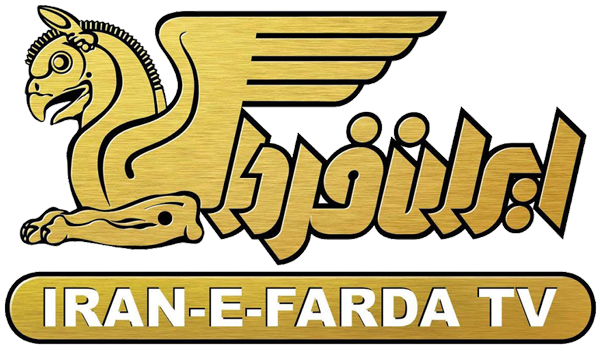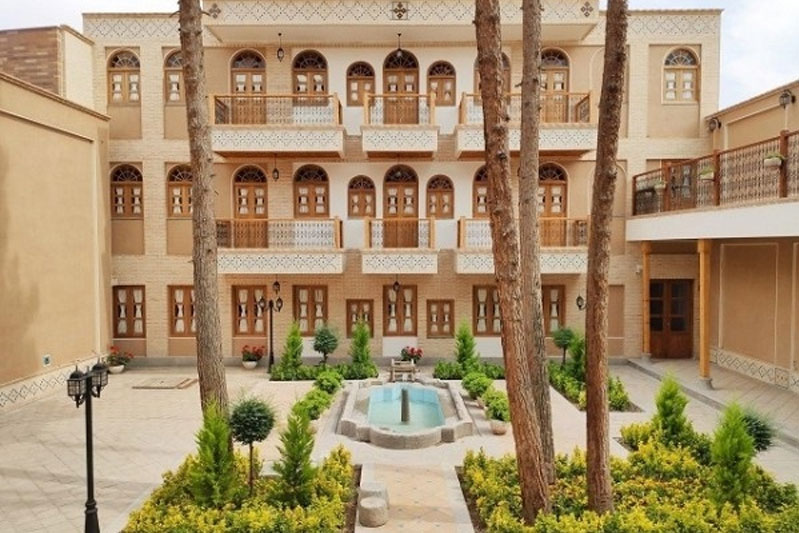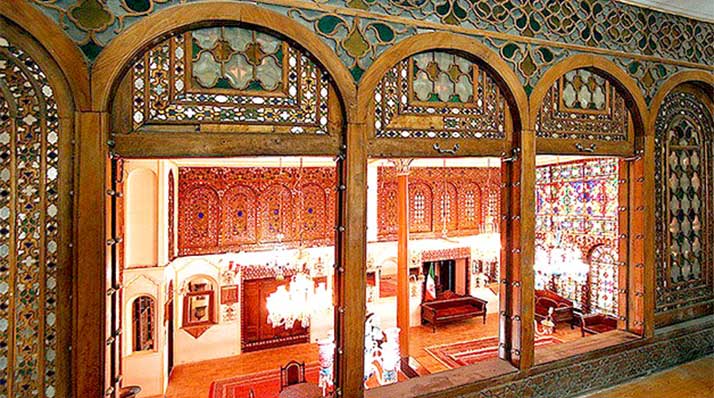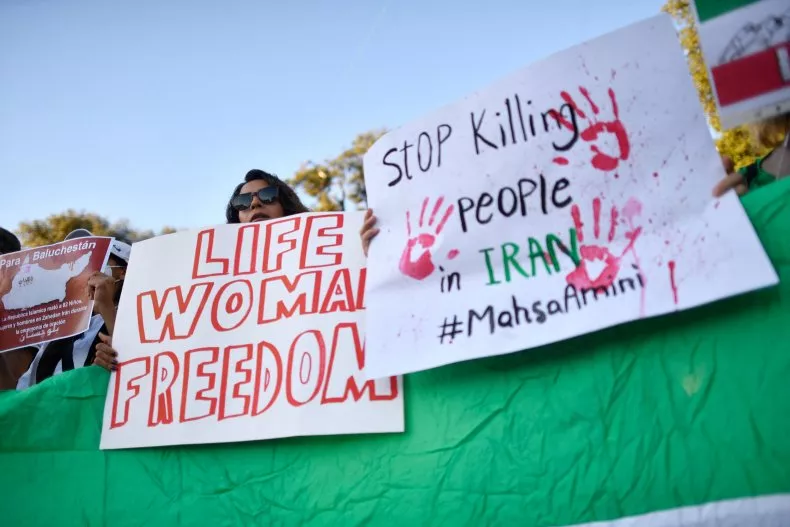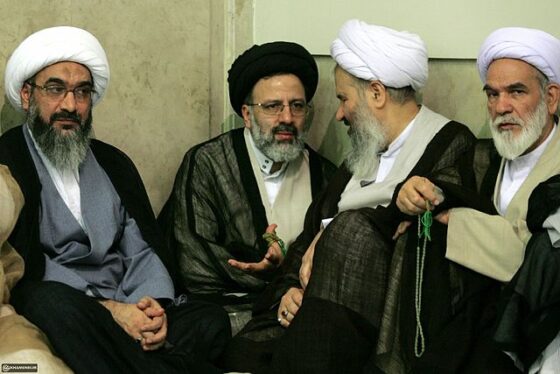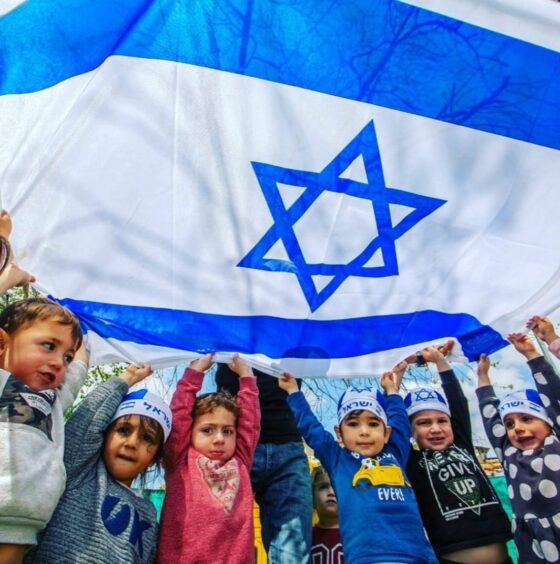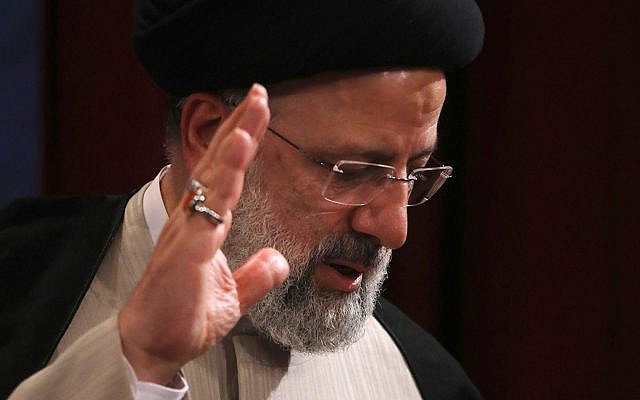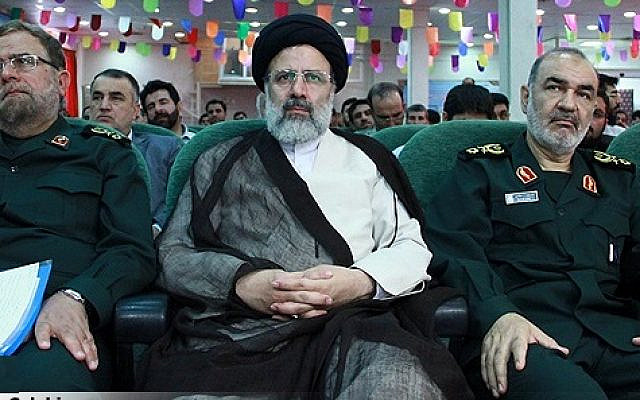Iran Reframed
Published on: 2020-09-11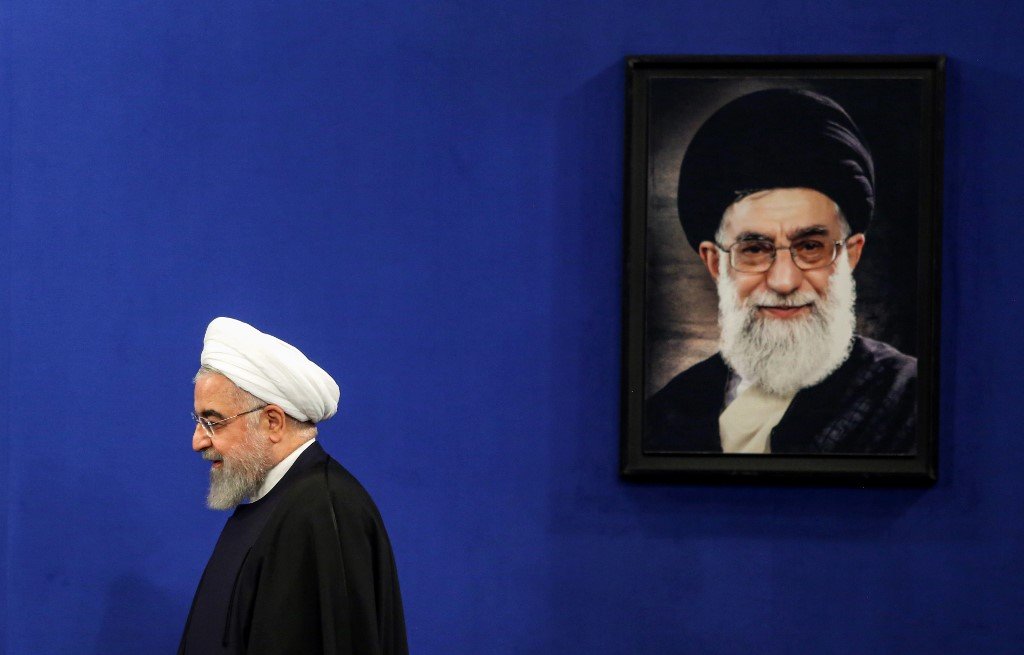
Roundtable:
Chair: Gregory Brew
Contributors: Suzanne Maloney, Saeid Golkar, Farzan Sabet, Michael Rubin
1. Introduction: Selling a Revolution by Gregory Brew
2. Can Iran’s Revolutionaries Convert the Next Generation? by Suzanne Maloney
3. The Islamic Revolutionary Guard Corps and the Manipulation of Iranian Hearts and Minds by Saeid Golkar
4. Can Iran’s State Media Warriors Reframe the Islamic Republic for a New Generation? by Farzan Sabet
5. Iran’s Media Producers and the Open Lie by Michael Rubin
1. Introduction: Selling a Revolution
Gregory Brew
On Aug. 19, 1978, hundreds of people packed into the Cinema Rex theater in Abadan, Iran. The movie that night was The Deer, a 1974 film by acclaimed Iranian director Masoud Kimiai. Twenty minutes into the picture, a group of men locked the doors and set fire to the theater. In a matter of minutes, nearly 400 people were suffocated or burned alive.
The moment galvanized revolutionary fervor among millions of Iranians who were convinced that the perpetrators of the disaster had been agents of the shah’s secret police, SAVAK. The episode is often considered one of the turning points in the Islamic Revolution of 1978–1979.1 In fact, available evidence suggests revolutionary supporters of Ayatollah Ruhollah Khomeini set the fire, targeting the cinema as a symbol of Western cultural influence in Iran.
Less than five months after the Cinema Rex Fire, in January 1979, the shah fled the country. A few weeks later, Khomeini declared the revolutionary government’s official media stance: “We are not opposed to cinema. …It is the misuse of cinema that we are opposed to, a misuse caused by the treacherous policies of our leaders.”2 As the regime founded by Khomeini consolidated its hold over Iran, it co-opted the film industry to provide messages of state propaganda and revolutionary zeal.3
That Khomeini’s political experiment was accompanied by a revolution in Iranian film making was not, on the face of it, entirely surprising. As Blake Atwood notes, “for more than a century, cinema has been ideologically and technologically entangled with the idea of revolution.”4 The challenge of selling revolution is the focus of Narges Bajoghli’s book, Iran Reframed: Anxieties of Power in the Islamic Republic. Based on 10 years of fieldwork inside the Islamic Republic as well as 200 interviews with media producers, veterans, and state propagandists working for the Islamic Revolutionary Guard Corps (IRGC) and Basij Organization, a state-sponsored paramilitary group, Bajoghli’s book engages with the process of producing propaganda for the Islamic Republic, at a time when the legitimacy of the regime in Tehran and its accompanying revolutionary rhetoric are increasingly questioned by a skeptical public.
Scholars have produced detailed studies on the history, foreign policy, political economy, and internal social dynamics of the Islamic Republic of Iran.5 The regime’s key institutions, such as the presidency and the IRGC, have been the subjects of scholarly studies.6 Comparatively little has been written, however, on how the Islamic Republic of Iran views itself or how an organization like the IRGC packages and promotes its legitimizing message for a domestic audience.
Bajoghli’s book seeks to fill this scholarly gap. Iran Reframed is a work of ethnographic exploration, constituting a deep dive into the minds of those who have taken on a unique challenge — how to sell the Islamic Republic to the people of Iran.
Selling the Revolution
The four reviewers for this roundtable found much to commend in Bajoghli’s work. Farzan Sabet found the book “eminently readable” and concise at 119 pages. Sabet applauds the book’s examination of the “hard core of power” within the Islamic Republic, and notes Bajoghli’s ability to use specific figures in order to illustrate broader issues: “This enables the book to zoom out at critical points from individual narratives or specific findings to the big picture.”
According to Saeid Golkar, Bajoghli explores the work of the IRGC in cultural and social spheres, where the organization enjoys nearly as much influence as it does in Iran’s security apparatus and political economy. Michael Rubin argues that Bajoghli’s book pulls the curtain back on the populist media produced within Iran, a task facilitated by the author’s “unprecedented access to regime influencers and media strategists.” Suzanne Maloney feels that Bajoghli “does a wonderful job of weaving snippets of background material around her sketches of the pro-regime media producers,” and finds her narrative “rich with the texture of Iranian life,” which lends her book an authenticity that is frequently lacking in work on contemporary Iran.
Sabet also notes Bajoghli’s effort to re-center recent Iranian history around the Iran-Iraq War of 1980–1988. While the legacy of the revolution looms large, Iran’s struggle against Ba’athist Iraq was more crucial in shaping major state institutions. “The Imposed War,” as it is called, was the crucible that forged the first revolutionary generation. As Sabet notes, the wartime experience shared by millions of young Iranians and the simultaneous development of the IRGC as the regime’s most powerful supporting institution had important consequences for how Iran would develop in subsequent decades. This is reflected in Bajoghli’s narrative, which follows a generational approach. Golkar describes how Bajoghli’s research takes her through three generations — from those who fought in the Iran-Iraq War, through those who joined the Basij and IRGC in the 1990s, to the more zealous producers who began working after the 2005 election of hard-line President Mahmoud Ahmadinejad.
By exploring the internal dynamics of each generation, Bajoghli gets to the socio-economic and class differences eating away at the central cohesion of the Islamic Republic. As Rubin notes in his review, such differences are often concealed by regime rhetoric that emphasizes social justice. But socio-economic divisions are evident in Iran, where a well-to-do class of urbanites live alongside millions struggling amid a stagnant economy, rising inflation, and pervasive public corruption. Those attracted to the Basij and IRGC often come looking for privilege and advantageous jobs and hope to secure a future for their children. There is an air of ambivalence to many of Bajoghli’s figures, who occasionally espouse moderate or reformist ideas, yet are drawn to the hard-line IRGC and Basij for reasons tied to basic economic need (and the dominant role these groups have played in state media since 2005). These producers were tasked with an important yet daunting mission: to sell the Islamic Republic and its revolutionary ideology to a younger generation of Iranians who are skeptical of the central regime and eager for a greater degree of political participation.
The defining moment for many of Bajoghli’s subjects is the 2009 Green Revolution, when millions took to the streets to protest elections widely believed to be rigged.7 The protesters were drawn chiefly from Iran’s urban, young middle class, which had come to see the regime as illegitimate, corrupt, autocratic, and out of touch. After 2009, Iran’s leaders became preoccupied with winning over the country’s youth and upwardly mobile middle class. Maloney emphasizes this in her review, referencing Supreme Leader Ali Khamenei’s surprising olive branch to regime opponents in the run-up to the 2013 presidential elections. The role of state media after 2009 points to one of the hallmarks of the regime survival strategy: “relentless efforts to inculcate support for the revolutionary state among its own citizenry.”
The job of IRGC and Basij media producers was to prevent a second Green Revolution by disseminating and popularizing messages the dissenting class would find attractive. As Golkar and Rubin note in their reviews, the producers are conscious of the gravity of their task, yet recognize the immense difficulty they face in convincing a skeptical public that a 40-year-old repressive, authoritarian, and inequitable regime still retains legitimacy.
The idea they fix on, according to Bajoghli, is nationalism. This is arguably the book’s most significant scholarly assertion. As a revolutionary state, Iran eschewed nationalism, an ideology of political mobilization and legitimation that had been used extensively by the pre-revolutionary Pahlavi state.8 Instead, the regime turned to shared religious identity, the iconography and mythology of Shia Islam, and the revolutionary ideology of Khomeini. As this message loses its power, Bajoghli argues that media producers have chosen to tap into latent Iranian nationalism, using nationalist images and rhetoric to extol major figures of the Islamic Republic — most notably Qassem Soleimani, a high-ranking leader of the IRGC and commander of the elite Qods Force who was killed by a U.S. airstrike in January 2020. In the wake of Soleimani’s death, hundreds of thousands of Iranians took to the streets in public mourning rituals. As Maloney notes in her review, the public veneration of Soleimani “was the intentional outgrowth of the propagation of war culture,” and a sign that the IRGC media producers’ message had found purchase among the general population.
Depth vs. Breadth
The reviewers also point to the book’s shortcomings. Golkar argues that Iran Reframed’s readability and brevity detract from the strength of its argument: The ethnographic work of Bajoghli’s interviews, which highlight the work of a small handful of producers, “does not capture the bigger picture of pro-regime media organizations.” Maloney makes a similar point, noting that Bajoghli works hard to present her interlocutors in a sympathetic light, “[eclipsing] any effort to draw wider analytical conclusions from the research.”
For Sabet, the crucial issue is of the media producers’ relative significance in the crowded realm of modern Iranian media. The IRGC producers must contend with rivals, including programming broadcast by groups tied to the diaspora. Where this content takes on a political message, it is deeply critical of the regime, questioning the legitimacy of the Islamic Republic and encouraging nostalgia for the Pahlavi era. “In this fractured media environment,” asks Sabet, “how much significance can we attribute to regime media producers, even with the relatively vast resources and semi-captive audiences at their disposal?” In a personal anecdote, Rubin recalls how, during his time in Iran, films with an apolitical message attracted large crowds, while films aimed at pushing the regime’s ideological agenda “showed to half-empty theaters.” In Bajoghli’s attempt to heap attention on the producers, the book’s biggest omission, according to Maloney, “is that of the audience.”
Another question raised by reviewers concerns the power of the media producers within the regime. Bajoghli emphasizes how producers were not always ideologically predisposed to support the messages they were developing. Some leaned toward more moderate or reformist positions. While Bajoghli is effective in illustrating the producers’ individual feelings, Sabet notes that their particular place in the power structures of the Islamic Republic is less clear. “How effective,” asks Sabet, “have regime media producers been in the grand scheme of things?”
Finally, reviewers grappled with Bajoghli’s argument concerning the resurgence of nationalism in Iran’s state media. Sabet argues that the “security nationalism” evoked by the IRGC in the 2000s or exemplified by the commemorations of Soleimani’s death in 2020 is fundamentally different from previous forms of Iranian nationalism. Sabet questions the power of this new nationalism, noting how the resonance of Soleimani’s death faded quickly in the aftermath of the Ukrainian airliner tragedy of mid-January 2020. Maloney also draws on the sudden decline in public veneration of Soleimani to suggest that general receptivity to the new narrative “may be more superficial and less durably resonant than initial impressions would indicate.” Golkar raises a similar point, questioning whether the new nationalism emerging from the producers’ work represents a strategic shift by the regime, “or a sporadic effort by a few individuals.”
As the reviewers attest, Iran Reframed is an exceptionally well-written book. Though slim, the volume conveys the significance of its subject and reveals a great deal concerning the development of state media within the Islamic Republic of Iran. Iran Reframed sheds light on the business of myth making in the Islamic Republic, illustrating the ambivalent attitudes and fraught intergenerational dynamics at work in the halls of the IRGC and Basij media production centers. A regime famous for its resilience, the Islamic Republic faces a profound crisis of legitimacy, one that Bajoghli’s subjects face on a day-to-day basis.
The timeliness of Iran Reframed was illustrated by the events of this past January, when the death of Qassem Soleimani triggered an intense reaction, both within the Iranian state and the broader Iranian public. The fact that such issues emerged as central features of Iranian discourse several months after Bajoghli’s book went to print testifies to her work’s relevance. Bajoghli has raised provocative questions that scholars, analysts, and observers of modern Iran will spend the next several years trying to answer. While Iran Reframed does not answer every weighty question it proposes, the reader is left with a palpable sense of a state, and a nation, at a profound moment of transition.
Gregory Brew is the deputy managing editor of Texas National Security Review and a historian of U.S.-Iranian relations.
2. Can Iran’s Revolutionaries Convert the Next Generation?
Suzanne Maloney
In June 2013, Ayatollah Ali Khamenei, the Supreme Leader who has ruled the Islamic Republic of Iran since 1989, deviated from the usual script in remarks exhorting Iranians to cast ballots in upcoming presidential elections. After the standard diatribe against “global arrogant powers,” praise for the boisterous election campaign, and appeal for high turnout to “frustrate the enemy,” Khamenei ventured an unprecedented olive branch: “It is possible that some people do not want to support the Islamic Republic for any reason, but in any way they would like to support their country. Therefore, these people should go to ballot boxes as well.”9
Khamenei’s unusual appeal to the opponents of the ruling system reflected the exigencies of the moment. He was beating the drum for the first presidential ballot since the Green Revolution four years earlier, when the improbable reelection of hardliner Mahmoud Ahmadinejad brought millions to the streets in protests that shook the post-revolutionary system to its core. Khamenei’s outreach prior to the 2013 election highlighted one of the central factors in the Islamic Republic’s durability: relentless efforts to inculcate support for the revolutionary state among its own citizenry.
The post-revolutionary regime has been intensely contested since its inception 40 years ago, when a diverse coalition ousted the monarchy despite little consensus around what should follow. That legacy and the intrinsic frictions within the polity, forged through the revolution and the transition to a new order, have sustained a commitment to mobilization and persuasion. Make no mistake: The Islamic Republic is an authoritarian state with little tolerance for dissent. Still, its legitimacy rests upon some foundational claim to popular support, and its leadership has invested heavily in a multifaceted set of instruments and initiatives to stoke internal support — even and especially where that support might be waning.
Despite considerable literature about post-revolutionary Iran, including more than 40 years of attempts to export the revolution to its neighbors, Tehran’s continuous efforts to market the regime to its own citizens command disproportionately little attention beyond cursory media coverage of the routine passion plays that pass for pro-regime rallies. Iran Reframed: Anxieties of Power in the Islamic Republic, a new book by Johns Hopkins University professor Narges Bajoghli, offers a glimpse of this important aspect of the Islamic Republic’s remarkable durability.
Iran Reframed is a slender book and, mercifully — given its origins in a doctoral dissertation — a narrative rather than a treatise. Bajoghli follows three pseudonymous “regime cultural producers” active in Iran’s booming film industry: Mr. Hosseini, Mr. Ahmadi, and Mostafa, whom the author met during years of field research in Iran. Each man is caught in a version of the same dilemma: How to produce films that reinforce loyalty to the revolutionary system for audiences whose political priorities, cultural references, and media habits have been radically transformed by 40 years of rule by the Islamic Republic. Ultimately, their mission entails reimagining the revolution and reviving its popular legitimacy without running afoul of the ideological strictures and personality politics that demarcate Iran’s power structure. In other words, they are fighting a losing battle, which the book’s protagonists appreciate as keenly as any reader will.
The Origins of Iran’s Film Industry
It should come as no surprise that Iran’s post-revolutionary leaders have invested heavily in cultural programming. The 1979 revolution succeeded at least in part due to the old-school connectivity, including smuggled cassette tapes of his sermons and mimeographed messages, that enabled Ayatollah Ruhollah Khomeini to coordinate strategy with opposition leaders and convey his messages to the public despite his exile by the shah. The power struggle within the revolutionary coalition that followed the shah’s ouster further incentivized a “massive propaganda program to claim the Revolution exclusively” for Islamism through public art, books and newspapers, radio and television, and other media.10
In the post-revolutionary battle for hearts and minds, it was hardly obvious that cinema would feature prominently. Because films offer such a powerful vehicle for molding political consciousness, especially in a society where many lacked literacy, their place in pre-revolutionary Iran was constrained by religious objections and political censorship (at various stages, productions of Shakespeare’s Macbeth and Hamlet were blocked by the shah’s government because they depicted a king’s murder)11. Although there is a long, proud, indigenous tradition of Iranian filmmaking, imported films and cheap local imitations dominated the cinemas during the pre-revolutionary era. As American movie stars “became household names,”12 cinema came under attack as a vehicle of cultural “Westoxification.” On the night of dissident philosopher Ali Shariati’s death, protestors gathered in Shiraz and smashed the windows of the city’s Capri Cinema, which had been showing Spartacus.13
Eventually, 180 movie theaters were set on fire during the revolution, including the infamous August 1978 arson at Cinema Rex, which killed 400 and amplified the opposition to the monarchy after rumors erroneously attributed the attack to the shah’s secret police.14 The intense polarization also eroded the human capital from the pre-revolutionary media industry, as many journalists, actors, filmmakers, and artists fled their homeland.
In such an atmosphere, a less-enterprising leadership might have retreated into essentialism by implementing the instincts of the traditional clergy, who branded cinema as sinful and prohibited. Instead, Khomeini’s ambitions for severing Western influences and reconfiguring Iranian society around his interpretation of Islam persuaded him to legitimize an indigenous Iranian film industry as “an instrument for ‘educating the people’ … like all art, it was to ‘be put in the service of Islam.’”15 The theaters still standing after the revolution were expropriated by one of the new state’s powerful semi-governmental foundations. As then-president Ali Akbar Hashemi-Rafsanjani later advised Iranian film directors, “If you … make good films, there will be no need for pulpits.”16
The new government’s embrace of cinema stemmed from its rejection of external influence. Its leaders wanted a monopoly over the cultural influences to which its population was exposed. 17 And they understood that without domestic sources of entertainment and information, Iranians might become dependent on foreign media. New technology, such as video cassettes, already posed a challenge. Documents seized at the U.S. Embassy in Tehran persuaded Iran’s leaders that private video circulation was intended to undermine the revolutionary state.18 Foreign videos and films were banned, and satellite dishes would follow.
As a result, the revolution begat a new cinema industry that bore little resemblance to its antecedents. After the new leadership purged universities and other institutions of liberal and Western influences, Iran’s post-revolutionary film industry took off during the 1980s, thanks in part to a then-unknown culture minister, Mohammad Khatami. The government established training programs for filmmakers and subsidized their productions. By 1989, Iran’s output of films ranked 9th in the world.19 Naturally, these perks came with strings, in the form of intrusive but ambiguous government censorship and control over the material requirements of film production. The successful rebirth of the industry only reinforced official resistance to external sources of entertainment. Revenues in the massive black market for Western videos reportedly dwarfed those of Iran’s new film industry during the 1980s.20
Many films produced during the revolution’s first decade focused on the war with Iraq. The need to sustain support for the long, bloody conflict added urgency to the Islamic Republic’s resuscitation of cinema and presented an opportunity to further fuse Iranian nationalism with a sense of religious obligation. “Within the first few months of war, a production of persuasion began, and everything from print to celluloid was used to illustrate the beauty of sacrifice.”21 This was propaganda with a purpose —one element of a larger official “war culture industry” that encompassed everything from postage stamps to street murals, poetry, and music.
Film became an important vehicle for sustaining revolutionary fervor and maintaining high levels of recruits for the front. As Morteza Avini, Iran’s most acclaimed director of war documentaries, explained, the narrative of an overwhelming, existential threat was essential for instilling the required determination in the nation and its soldiers.22 War cinema helped reinforce a sense of solidarity under siege from the outside world, glorify martyrdom, and legitimize the expansion of state authority. Over time, a variety of government institutions, directly controlled by the Islamic Revolutionary Guards Corps, emerged to spearhead continuous production for the war culture industry.
“Bring the Arts and Media Back in Line”
The war’s end, via a 1988 ceasefire that left neither side satisfied, did not end the official embrace of war culture. Iranian leaders appreciated the utility of preserving the war “as a living memory”23 and a tool to shape Iranian identity. They also resisted Khatami’s hesitant attempts at relaxing state restrictions on filmmakers and other artists, sparking his 1992 resignation in a letter that warned of an “unhealthy and tumultuous environment” facing the culture ministry’s work.24
Iranian cinema, and the broader cultural sphere, experienced a turbulent ride after the war, as economic pressures and political changes buffeted both the state and the industry. Even as Tehran began to relax tensions with its neighbors and liberalize foreign investment and trade, Iran’s leaders sought to bolster the revolution’s “traditional” values by doubling down on the motifs and messaging that had animated the early war films.
Debates over the film that prompted Khatami’s resignation, Time to Love directed by Mohsen Makhmalbaf, accelerated the intellectual ferment that eventually culminated in the reform movement. That movement, buoyed by Iran’s post-revolutionary baby boom, catapulted Khatami to the presidency in 1997 and generated a burst of new cultural production and media during his eight years in office. Makhmalbaf and other filmmakers openly backed Khatami’s dark horse candidacy, and a campaign video by director Saifollah Dad not only helped him upset the front-runner but also launched a new genre of election films.
The arts played a crucial role in defining the politics in the evolving revolutionary order, and during the reformist era, films pushed the boundaries of permissible social and political commentary. The war remained a potent theme, but the relaxation of the political atmosphere and the distance of time empowered a more jaundiced tone, with movies like Azhans-e Shishehi (“The Glass Agency”), which tapped into anger over the post-war treatment of veterans. However, despite signs of liberalization, Khatami’s presidency proved less successful at enacting meaningful changes to the power structure or improving Iran’s economy. The backlash to his modest opening targeted independent cultural activity and critical media. The judiciary, which is controlled by Iran’s supreme leader, shuttered hundreds of publications, banned movies that challenged the ideological claims of the revolution, and imprisoned filmmakers, journalists, and other artists.
Had Khatami and his allies achieved durable reforms to Iran’s ruling system, the state’s propagation of an official narrative steeped in war and religiosity might have receded as a defining feature of contemporary Iran. Meaningful political liberalization as envisioned by the most ambitious reformists would not have produced an unfettered democracy in Iran, but any abatement in the Islamic Republic’s authoritarian strictures would have expanded the space for contesting and reinterpreting the revolution and its aftermath. Instead, the system’s domination precluded its gradual amelioration, and the top-down limits on expression and dissent steadily widened the gap between the regime and society.
Khatami’s neoconservative successor, Mahmoud Ahmadinejad, handed the Ministry of Culture and Islamic Guidance to a former Revolutionary Guard commander who sought “to bring the arts and the media back in line with a strict revolutionary interpretation of the laws of Islam.”25 Upon taking office, Ahmadinejad banned films promoting feminism, liberalism, or imperialism as well as those endorsing anti-religious or unethical activity, violence, and use of drugs or alcohol. He championed the values of the “sacred defense” and “basiji culture,” a reference to the regime’s popular mobilization corps that signifies self-sacrifice in service of Islam. Censorship of books, newspaper, theater, music, and movies intensified, and the construction of a national “halal” internet began.
Ahmadinejad’s attempt at cultural retrenchment was only one element of his ambitious agenda. He sought to assert Iran’s power across the region and stoked nationalist sentiments on behalf of the contested nuclear program. He undertook heavy-handed, populist socio-economic policies that fueled inflation and squandered an unprecedented influx of oil revenues. His chaotic approach to governance seemed deliberately provocative, and he alienated both ideological poles within the political establishment.
As a result, his 2009 reelection campaign assumed historic consequence, sparking protests by millions of Iranians who rejected Ahmadinejad’s dubious victory and demanded “where is my vote?” Those protests, which became known as the Green Revolution, had an important cinematic dimension, as video feeds and other visuals from the demonstrations mobilized domestic support and international sympathy. The image of Neda Agha Soltan, whose killing by security forces was captured on video, became a catalyzing force for opposition to the Islamic Republic. Iranian filmmakers mounted one of the earliest expressions of solidarity with the protestors. Five days after the election, as unrest intensified, 120 documentary producers issued a statement decrying the dishonesty of state broadcasters’ coverage of the crisis.26
More Questions Than Answers
Bajoghli’s analysis in Iran Reframed begins with these challenges — the Islamic Republic’s cultivation of a vast bureaucracy to propagate war culture as a means of reinvigorating support for the regime after the 2009 upheaval. The book approaches this question by chronicling the first-hand experiences of three men within the official machinery of cultural production, depicting their struggles to navigate the competing pressures of youth alienation and official ideological mandates in the Islamic Republic. Bajoghli illuminates the Islamic Republic’s capacity to fashion and communicate a compelling national narrative that reflects evolving political conditions and social norms.
The decades of resources invested in this project created the context for mass mourning that materialized in the wake of the January 2020 U.S. strike that killed Qassem Soleimani, commander of the Revolutionary Guards’ Quds Force. Whatever proportion of the millions who jammed the streets for memorial services were expressing sincere dismay over Soleimani’s death, their veneration of the man was the intentional outgrowth of the propagation of war culture, primarily by the various cultural arms of the security bureaucracy that Iran Reframed chronicles.
There are many aspects of this book to admire. Bajoghli does a wonderful job of weaving snippets of background material around her sketches of the pro-regime media producers. The book is rich with the texture of Iranian life, especially as seen through the eyes of a visiting researcher: the challenge of navigating Iran’s official interpretation of Islamic dress in the extremes of Tehran weather, the utility of a car ride for bridging the legal and social distinctions between private and public space, and the fault lines of class and generation that splinter even an ostensibly ideologically coherent segment of the political establishment.27 Especially compelling are the narrative details surrounding the challenges the producers face as they try to pitch propaganda without the audience catching on. One filmmaker shrouds an exile interviewee in a magneh to cover her tattooed arms, while organizers of small-town film festivals struggle to find music to entertain the waiting audience that is sufficiently appealing, both because of the regime’s ban on popular music as well as the need to avoid diverting the assembled crowds from the main attraction.28
The main characters are depicted in a sympathetic light — by turns self-deprecating and disarming, struggling with the disconnect between their personal aspirations and the stentorian official dictates imposed upon them from above. Bajoghli notes in the book’s introduction that her experience meeting members of Iran’s Revolutionary Guard Corps as well as basijis (members of the internal mobilization force) persuaded her that they are “grossly misrepresented and misunderstood,” and the text tends to channel their interpretation of history, rather than challenge or interrogate those conclusions.
However, Bajoghli’s determination to humanize and, by extension, vindicate the individuals she profiles eclipses any effort to draw wider analytical conclusions from the research. The book concludes without exploring the obvious implications of Tehran’s semi-successful propagandizing. Perhaps most importantly — is it enough? At a time when the Islamic Republic is facing epic pressures from within and without, can the regime’s cultural programming and revamping of war culture themes sustain sufficient popular legitimacy for the Islamic Republic to endure? Bajoghli does not venture into this debate.
In this sense, Iran Reframed is limited by the narrowness of its aperture. The book barely skims through most of the past 40 years of political battles over cultural policies. There is only glancing discussion of media other than film or the broader bureaucracy established to undertake the inculcation of the Islamic Republic’s ideological narrative at home and abroad. The book doesn’t adequately situate the official investment in modernizing war culture within the broader context that includes a wink-and-nod at more permissive cultural production, including the Turkish soap operas which have been widely available via satellite channels as a kind of safety valve tolerated by the leadership.29
The most gaping omission is that of the audience. Bajoghli notes that “Iran’s regime filmmakers imagine their audiences, mainly the youth they wish to target, as abstractions,” but that is precisely how the book treats them as well. The reader is offered a front-row seat for the individual ruminations and intra-group deliberations among regime filmmakers, but the book provides only the most cursory suggestion of how the media these men produce is consumed within society. A more thorough research project would have balanced the personal perspectives of the men who are adapting the war culture to contemporary realities with more reporting on the responses of young Iranians, including those who went to the streets repeatedly over the course of recent years to denounce the Islamic Republic.
The persistence of these protests, including the backlash that erupted in January 2020 only days after the epic Soleimani ceremonies over the government’s accidental downing of a civilian jetliner, suggests that receptivity to official narratives may be more superficial and less durably resonant than initial impressions would indicate. In fact, the work of regime cultural producers generates a variety of reactions. For some, “the state’s discourse, of the strong mourning women and the heroic martyrs” has been counterbalanced by “the secular discourse, which is to evade, to ignore, to escape to the Caspian.”30 Among others, the omnipresent themes of threat and martyrdom contribute to depreshen (depression) among otherwise healthy young people — the sense of “individual or collective grief, dysphoria, anxiety, melancholy, situational depression, clinical depression and/or what psychologists call ‘learned helplessness.’”31 And perhaps most dangerously for the Islamic Republic, the official narratives are also often deployed to advance a very different agenda: one of dissent. For example, music penned to commemorate the sacrifices of the war has been overlaid on videos associated with the Green Revolution.32
Has the vast investment in cultural production, updated and attuned to contemporary culture, allowed the Islamic Republic to fashion a kind of nationalist attachment to the theocratic state? Or is the success offset by the undercurrent of frustration and misery that has infected the post-revolutionary political culture? The vignettes that comprise Iran Reframed are fascinating and illuminating, and make the book worthy of an afternoon’s read. But they leave more questions than answers about Iranian politics and society today.
Suzanne Maloney is the Vice President and Director of Foreign Policy at the Brookings Institution. She has advised Democratic and Republican administrations on Iran and the broader Middle East. She has published three books and numerous articles, and holds a Ph.D from the Fletcher School of Law and Diplomacy at Tufts University.
3. The Islamic Revolutionary Guard Corps and the Manipulation of Iranian Hearts and Minds
Saeid Golkar
The number of studies on the Islamic Revolutionary Guard Corps (IRGC) and the Basij civil militia has increased dramatically since 2009.33 Almost all of these studies focus on the IRGC and Basij’s military and security functions, as well as their role in the survival and continuity of the Islamic Republic and involvement in Iran’s politics and economy. Few recent studies examine their role in social and cultural spheres. Iran Reframed by Narges Bajoghli, an assistant professor at Johns Hopkins University, is a welcome contribution to fill this gap.
As one of the first publications on the involvement of the IRGC and the Basij’s in media production, Iran Reframed takes a deep dive into the world of pro-regime media producers. The book depicts the diversity and contestation among those who fiercely defend the survival of the regime.
Iran Reframed has five chapters, in addition to its introduction and conclusion. Its aim is to show how the regime tries to survive while struggling to surmount two challenges: “how to safeguard the socioeconomic and class status of its leaders and how to appeal to younger generations and their demands for political participation.”34
Bajoghli argues that pro-regime media producers have obscured the origins of regime discourse through strategies of dissimulations, created new distribution strategies, and appealed to notions of nationalism as a unifying force beyond political ideologies.35 Well-written and engaging, Bajoghli’s analysis is limited by the narrow scope of her book. Though her points regarding the generational shifts in Iran’s hardline media are salient, they fail to acknowledge the subtle nuances affecting the generational changes in Iranian politics.
Regime Media Through the Generations
The book’s introduction begins by describing the gap between state and society and growing disbelief from Iranians of the regime’s media production, especially after the brutal suppression of the 2009 Green Movement. The regime in general, and the IRGC and the Basij in particular, has lost legitimacy in the eyes of millions of Iranians, especially the younger, more educated, and more urbanized. To win the hearts and minds of the people, pro-regime media producers have tried to replace their propaganda with attempts to communicate through the language of the youth and project the IRGC as the defender of the country, rather than merely a protector of the regime.36 Instead of applying the standard labels of “reformist” or “hardliner” to Iran’s media producers, Bajoghli distinguishes between “independent cultural producers” who tend to oppose the regime, and “regime producers” who defend the regime. There are also several subdivisions in each of these groups, including generational divisions — a factor that influences their view on what the regime means today and how it should be defended.37
Chapter one focuses on the transformation of the IRGC and the Basij and their generational changes. Using Karl Mannheim’s framework of generational analysis, Bajoghli identifies three generations of IRGC and Basij members. The first generation are the “battlefront and war guys” (bacheh-ha-ye jebheh va jang) who fought in the Iran-Iraq War. The second generation joined the Basij in 1990s and were instrumental in the group’s postwar cultural campaigns. The third generation joined the Basij around 2005 — the year Mahmoud Ahmadinejad was elected president. By tracing their development, the author discusses each generation’s involvement in confronting “soft war”: threats to the regime’s stability, such as diaspora media sources and foreign/external satellite television. The author also briefly touches upon social class and structures within the Basij, especially regarding its third generation, which became more deeply invested in the regime’s revolutionary ideology than previous generations.
These generational and social class differences can be seen in differing narratives of the Iran-Iraq War. In chapter two, the author identifies a double narrative of the war.38 The Islamic Republic has created an official narrative, in which the war was an Islamic war between right and wrong. In this narrative, all Iranian soldiers participated in the war to defend the Islamic regime and its leader, Ayatollah Ruhollah Khomeini, rather than for nationalistic reasons. It was a religious defensive, not a territorial war.
This narrative started to weaken over time. The official narrative was produced through the work of Morteza Avini and his group, particularly through their series Ravayat-e Fath (“Chronicles of Victory”) in the 1980s. After the end of the Iran-Iraq War, Avini continued his work. According to Bajoghli, he tried to “transform the war from a military confrontation to a cultural and social confrontation in Iranian cities and towns.”39 Two important organizations responsible for creating the official narratives are briefly discussed: the Narrative Foundation (Bonyad Ravayat) affiliated with the IRGC and the Basij, and the Cultural Center (Hozeh Honari), which is subordinate to the Islamic Propagation Organization. The official narrative is far from the real one, as soldiers told the author; the war was not holy but “horrible.”40 In the official narrative, the war is between good and evil, in which Iranian soldiers were eager to sacrifice their lives for the cause of ideology. In the real or unofficial narrative, the Iran-Iraq War was a bloody war defined by pain and suffering.
Chapter three returns to the idea of independent and pro-regime media producers and seeks to explain the division between “us” and “them” (or Khodi and Gheyr-e Khodi) and how belonging to one of these groups has “legal, material and social consequences.”41 The division between Khodi and Gheyr-e khodi can be found everywhere, not just among media producers. While the regime excludes the “other” producers (those who are opposed to or critical of the regime) through the restriction of funds, or by confiscating their products, the media production of this “other” are more welcomed by Iranians, especially the youth. On the other hand, while the pro-regime media producers huge financial and logistical support from the regime, they have been unable to resonate with people and communicate with youth.
In chapter four, Bajoghli argues that the regime media producers are using new strategies to solve this problem. For example, since Iranians do not trust the regime, these producers try to hide the regime’s fingerprints in their productions.42 The author mentions a movie called An Unfinished Film, for My Daughter Somayeh which was produced as an independent film in 2013 aimed to discourage frustrated youth from joining opposition groups, especially the Mujahedin-e Khalq (MEK).43 Producers often market their movies as “underground” independent products to conceal their identity as regime propaganda. Other strategies include broadening their audience base by screening their products in schools and creating film festivals across the country, particularly in small cities. These producers also leveraged songs and television celebrities to try to entice more people into watching their products.44
The last and most important strategy which “the leaders of the regime media centers” are using is appealing to nationalism. The author discusses this in the fifth and final chapter. According to Iran Reframed, unlike the regime’s old stories based on a political interpretation of Islam and the “Shia ethos of fighting against oppression,” the regime’s new story “presented itself in the form of populist nationalism.”45
The author argues that after the suppression of the 2009 Green Movement, the regime media producers reframed their story, in which the IRGC’s driving force is nationalism — not political Islam.46 The author provides a few examples to prove her assertion that there has been a concerted transition from the old narrative that focused on Islamic ideology to a new narrative focused on populist nationalism. These included the creation of the Sacred Defense Garden and Museum, which opened in 2012; three video music clips, which contain nationalist messages; and two social media campaigns. In one of these campaigns, General Qassem Soleimani, the commander of IRGC Qods force, is depicted as a nationalist hero who defends Iran against the Islamic State of Iraq and Syria.
The conclusion wraps up the entire book, which emphasizes the complicity, diversity, and contention among pro-regime actors in their struggle to defending the Islamic Republic.
…
